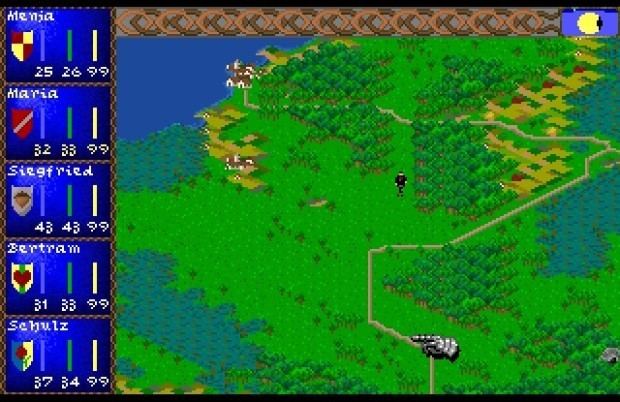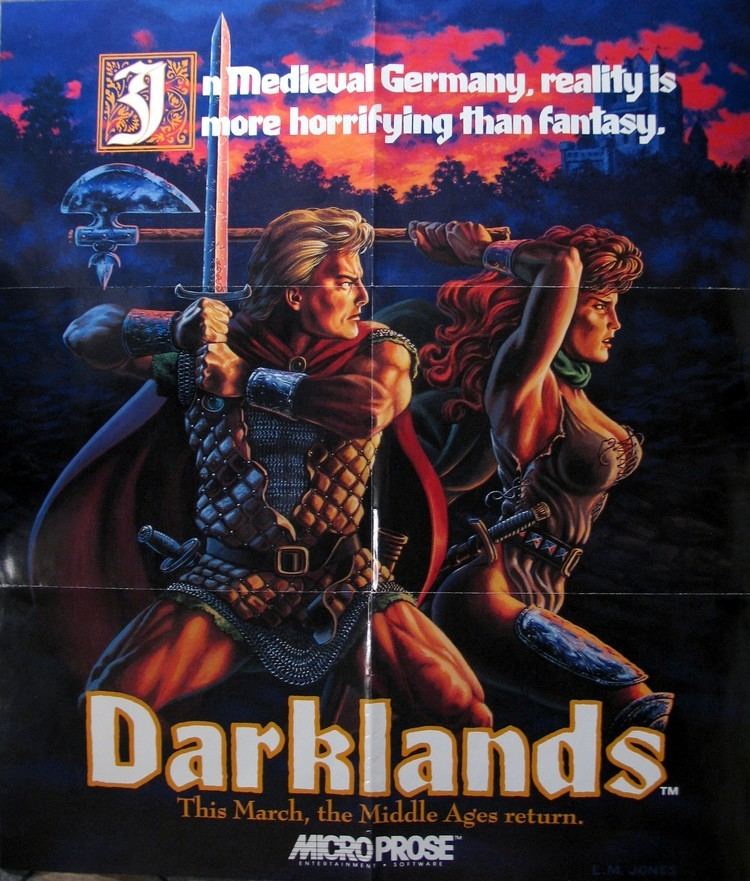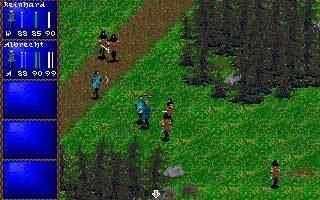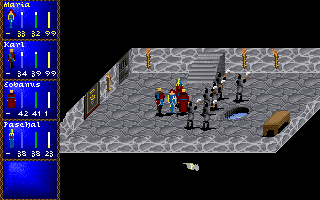9 /10 1 Votes
4.6/5 GOG Artist(s) Michael O'HaireArtino | 9/10 Steam Director(s) Arnold Hendrick Initial release date 1992 | |||||||||||||||||||||||||||||||||
 | ||||||||||||||||||||||||||||||||||
Programmer(s) Jim SynoskiDouglas WhatleyBryan Stout Release date(s) Floppy disk versionNA: 1992CD-ROM versionNA: 1995GOG.comWW: 2011SteamWW: 2014 Similar MicroProse games, Role-playing video games | ||||||||||||||||||||||||||||||||||
Darklands is a role-playing video game developed and published by MicroProse in 1992 for the PC DOS platform. Darklands is set in the Holy Roman Empire during the 15th century. While the geographic setting of the game is historically accurate, the game features many supernatural elements.
Contents

Gameplay

This type of gameplay is an early example of open world in role-playing video games. The player is free to complete quests that will give them a positive reputation, or to pursue a negative reputation by performing evil deeds. In Darklands the player's reputation is limited geographically, allowing the player to be simultaneously hated in one region and exalted in another.

The setting for Darklands is medieval Europe as the inhabitants thought the world was at the time. All the cities that one's party may visit in the game are real places that existed in the Holy Roman Empire of the 15th century. Most are in modern-day Germany, but some are within the modern borders of other countries including Denmark, Netherlands, Luxembourg, France, Switzerland, Austria, the Czech Republic and Poland. The city names given in the game are old German names of the cities, some of which are now exonyms; the new local names are given in parentheses.

There are no other species available in character creation — all players are human and are differentiated by occupation. Any party member is capable of performing what are known as class-based feats in many other role-playing games, but skillful players usually improve the party member's skills only in the appropriate area. Thus, the equivalent of a cleric in this game would be someone who specializes in religious studies as well as healing skills. Because the character specializes in the above, however, does not preclude him or her from learning artifice skills, such as lock picking. Age is a factor, as characters will begin to lose physical prowess as they age. However, the older the player is when the character is generated, the more skills and better equipment he or she starts with.
While the majority of the game uses text-based menus—enhanced with hand-painted illustrations describing the player party's available actions, the party's movement between cities and during battle uses a graphical user interface. The real-time combat is dependent not only on the characters' skills, but also the type and quality of weapons used against the enemy and its armor. For example, using swords against plate armored foes would be less effective than using flails or maces.
Plot
The game is set in a historical fantasy version of medieval Europe, where monsters and magic actually exist. The plot is not linear and there is no set path for a player to follow.
However, there is a main quest to follow in order to finish the game, which involves hunting witches and heretics. Darklands ends once the final battle is completed against the demon lord Baphomet, preventing the apocalypse. Baphomet can be found in a castle in an obscure part of the game map which can only be found after finding and defeating the evil occupants of various other fortresses around the game, in which the party can find information which will point it to the final location. According to the official clue book for the game, the final battle location, as well as the location of some other quests in the game, is randomized at the start of each new game.
The game's manual notes:
Development
Darklands took almost three years to make and cost three million dollars, which was a very large sum for video game development at the time. According to the manual, "Darklands would have been impossible without the faith and vision of the management of MicroProse Software. We originally underestimated the time, complexity and cost of the project by a large factor. When development costs rose past the stratosphere, there was a great temptation to either give up or just 'publish whatever we've got,' regardless of quality." An Amiga version of Darklands was considered but the game was judged as too large to be played from a floppy disk and the potential market of hard disk equipped Amigas was not large enough.
Release
Darklands was released by MicroProse with a number of bugs, ranging from minor to major. These included many instances of what would now be called crash-to-desktop errors. Additionally, the "character colors bug" results in on-screen characters colors being replaced with random (often bright) colorings. Most of the bugs in the game were correctable by subsequently released patches. Before ubiquitous Internet connectivity, such patches were typically only available through BBS downloads by modem owners and informal person-to-person copying, and thus many gamers were only able to play the originally-released version. This gave Darklands a reputation as a buggy game.
At least one third-party commercial character editor was advertised for Darklands. Darklands was supposed to be a first entry in a series of games with related settings, but no follow-up was ever made. It was later re-released by GOG.com as a downloadable title. Tommo Inc. purchased the rights to this game and digitally publishes it through its Retroism brand in 2015.
Reception
Computer Gaming World in 1992 offered contrasting opinions. Scorpia liked the historical setting and use of religion but criticized Darklands' repetitive encounters and—more seriously—many bugs and missing features, such as the inability to save within dungeons which, she reported, was a problem given the game's instability. She concluded that "the game ultimately brings little or no satisfaction when 'finished'." Johnny L. Wilson acknowledged the bugs and repetitive nature but emphasized that "I still like the game," citing the importance of skills and an "open-ended feel and an element of free-will that I haven't previously experienced in a CRPG." In 1993, Scorpia called Darklands "perfect example of a fine idea ... gone wrong" with a "horrible ending", and "not a recommended game".
Despite the bugs, the game was well received by other critics. It got 4 out of 5 stars in Dragon, which stated that Darklands "is a great adventure and is certainly one of the best multicharacter FRPGs we've had the delight to play. With well-drawn graphics, multiple quests, good character generation, and flexibility in play, the game's detail is phenomenal." Alfred Giovetti writing for Compute! praised Darklands for the "multitude of choices you get, which surpass the complexity and historical accuracy seen in any other contemporary computer game" and that its "attention to detail is exemplary". The review concluded "MicroProse should be congratulated for a truly heroic effort in creating a game for sword, sorcery and history buffs." Darklands won the 1992 "PC Special Achievement Award" from Game Players magazine.
Retrospectively, GameSpot featured Darklands on their lists of "The Greatest Games of All Time" Todd Howard cited the game as an influence on Bethesda Softworks' series The Elder Scrolls.
